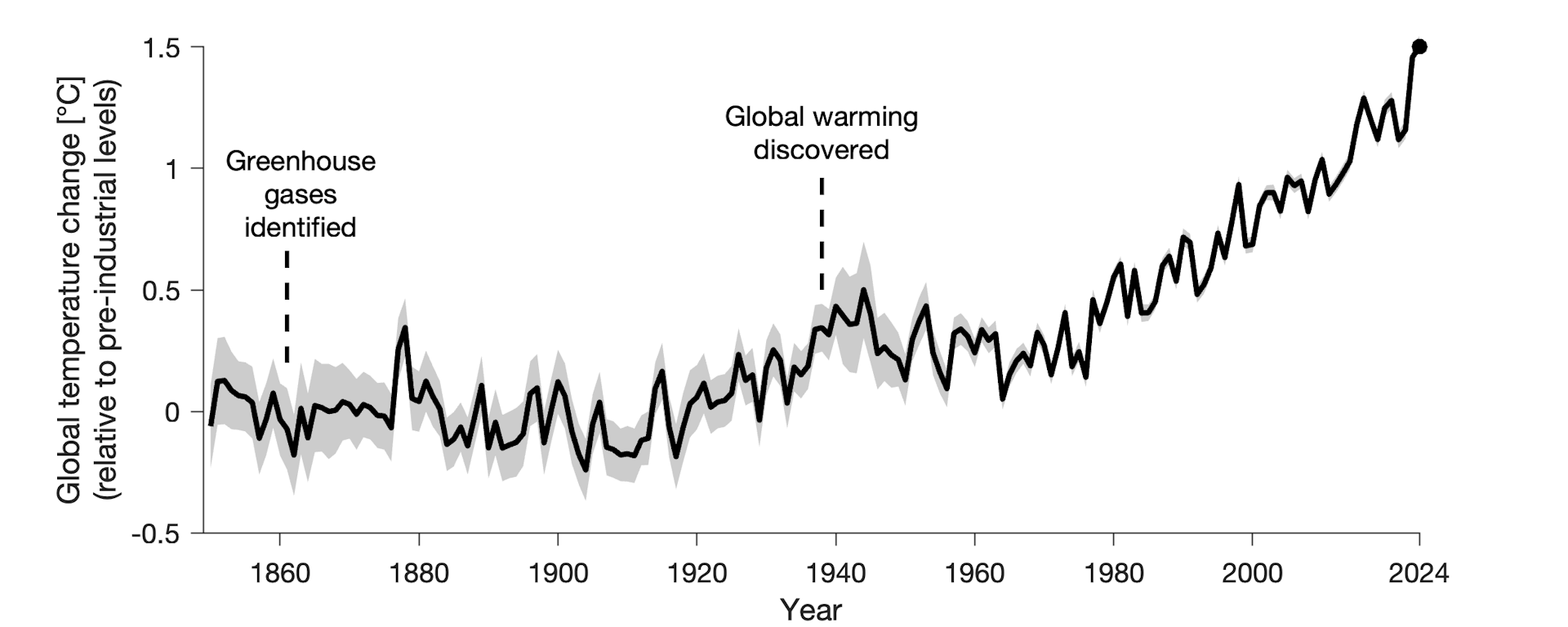In September 1933, American meteorologist Joseph Kincer asked a simple question: is the climate changing? So began the effort to understand the scope of humanity's interference with the climate.
By examining trends in measured temperatures at many different locations around the world, Kincer concluded that the world was getting warmer, but did not suggest a reason. A few years later in 1938, British engineer Guy Callendar showed that Earth's land temperatures had warmed by about 0.3°C in the previous 50 years.
Callendar also argued that this warming was largely due to increased levels of carbon dioxide in the atmosphere from the burning of coal, which built on earlier theories of the greenhouse effect.
Today, measurements from thousands of weather stations on land and from satellites and ships are combined with weather forecast models to produce a consistent picture of how the climate is changing day by day and decade to decade.

Negotiators are gathered in Azerbaijan for Cop29 (the latest round of UN climate change negotiations) at a time of great peril. The last two years, 2023 and 2024, were the warmest in records stretching back to the mid-19th century and will be close to 1.5°C above the temperature of the early industrial era.
It took a century for the globe to warm the first 0.3°C, but the world has warmed by 1°C in just the last 60 years.
Earth is getting hotter, and at a faster rate.

What determines the rate of global warming now is primarily humanity's emissions of greenhouse gases. If the amount of greenhouse gas we are emitting increases, then the rate at which the world is getting hotter speeds up. Reduce emissions and warming continues, but at a slower pace. Only once emissions are net zero are global temperatures expected to roughly stabilise.
There are other factors and, as a result, the globe has not warmed at the same rate through time. The rate of global warming has been fairly even at 0.2°C per decade from 1970 until now, much faster than any period before. The last two years could suggest the rate is accelerating, though this is not yet clear.
Before 1970 there was a period of slight global cooling due to a rapid increase in reflective aerosol particles being added to the atmosphere, also due to burning fossil fuels.
The onset of clean air policies introduced in the 1960s in many western countries reduced this cooling influence. Before the second world war, natural variations in the climate dominated, with a very slow warming influence from early industrialisation.
Nor has the world warmed equally everywhere. Land has typically warmed faster than the global average, with ocean regions warming more slowly. The Arctic is warming fastest of all at up to four times the global average.
What is the outlook for 2025? Persistent warmth during the last two years has slightly surprised climate scientists. But it is more likely than not that 2025 will be cooler than 2024, given the transition to La Niña conditions in the tropical Pacific Ocean. This is the cool phase of a natural cycle known as El Niño Southern Oscillation, or Enso.
And beyond? We will exceed 1.5°C of warming as a long-term average sometime in the next decade or so. Our choices in the next few years will determine whether we can limit global warming to 1.6°C or 1.7°C above pre-industrial levels, or whether the world will continue to warm, with more serious consequences the higher temperatures get.
Ed Hawkins, Professor of Climate Science, University of Reading
This article is republished from The Conversation under a Creative Commons license. Read the original article.
